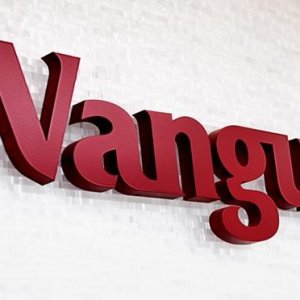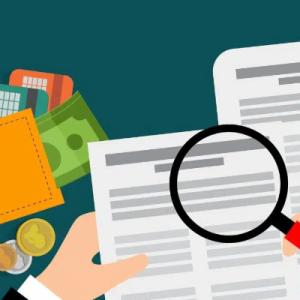Customer Lifetime Value: The Importance of Loyalty Programs

STORY INLINE POST
During a company’s lifetime, customers are naturally gained and lost. By providing a good product or service, your customer retention will increase; however, it is only by building a good customer relationship that customers will stay loyal to your brand. Customer loyalty is important because it increases profits, improves sales success and allows sustainable growth. For instance, loyal customers can refer your product or service to a friend; in fact, a customer who is emotionally attached to your brand will recommend you 30.2 percent of the time, while standard customers will do it just 7.6 percent of the time.[1]
With these insights, it is clear that establishing an emotional connection with customers is important, also considering that increasing customer retention rates to 5 percent produces a 25 percent increase in profit. [2] This emotional connection will eventually lead to increasing the customer lifetime value. But what does this mean? Customer lifetime value, or CLV, is the profit margin an average customer will generate over the course of their relationship with a brand. CLV can be calculated as follows:
Average Value of Sale × Number of Transactions × Retention Time Period
Calculating the CLV, will help a business answer queries such as:
- Which type of products do customers want?
- What products have the highest profitability?
- How much can a brand spend to acquire similar audiences?
- Who are the most profitable customers?
Knowing the relevance of CLV, businesses might want to consider using their resources to improve it. Boosting CLV will help a company know its financial return of investment and how much they should spend to retain customers. It will also help them find balance in marketing goals and make better decisions, in general. So, there is no doubt about investing in increasing CLV rates, but how should you do that? Here are some smart practices:
- Make your onboarding process seamless
As a customer, there is nothing worse than having a bad experience when buying for the first time in a shop. Businesses might want to consider personalizing the onboarding process according to their buyer persona. This will create a good experience, ending in customer retention.
- Easy returns
Do not question much, generate an easy process for customers to return items they purchased. Otherwise, the odds of them making another purchase will significantly reduce.
- Freebies
Freebies are a good tactic to bond with customers. Meeting expectations is always good but exceeding them is even better. Surprising your customers will make them remember a brand.
- Upselling and cross-selling
Both are classic techniques to increase the average value of a customer’s transaction. Upselling is basically persuading customers to purchase a more expensive or upgraded product than the one they bought: “Do you want to make your soda bigger for 1 extra dollar?” Cross-selling, on the other hand, is choosing an add-on to a product or buying a related or complementary item. “Do you want fries with your burger?”
5. Create rewards programs: Implementing a loyalty program is a great way to incentivize repeated purchases. This strategy relies on offering discounts or benefits with each purchase a client makes.
The Importance of Loyalty Programs
Many companies rely on a consumer loyalty program to help build emotional connections with customers. On average, a client who does not emotionally connect with a brand, stays with it for 3.4 years, versus someone who does and consumes it for 5.1 years.
Loyalty programs remain strong and are proven effective; in fact, 73 percent of people are more likely to recommend brands with good loyalty programs and 80 percent are more likely to continue their relationship with brands that have one. [3] But statistics also prove rewards programs are probably mistargeted. According to Adweek, an average consumer belongs to 14.8 loyalty programs but is only active in 6.7. With the proliferation of loyalty programs, the real question is: are they connecting?
To avoid falling into this mistake, businesses should learn to know their consumers. Personalizing a rewards program is essential, so here is a compilation of some of the classic types of loyalty programs.
- Points
This is the most common loyalty program and consists of accumulating points with each purchase. These points can later be redeemed for discounts or merchandise. This type of program could be problematic for industries with low basket values, since there are fewer opportunities for customers to accumulate points.
- Tiers
This strategy is similar to points programs. It consists of customers accumulating points until they unlock various levels of rewards. This technique is great to motivate consumers to increase their average ticket, as it creates an aspiration to reach new “tiers” that bring better benefits. Depending on the vertical, 40 percent to 70 percent of customers are willing to pay extra for preferential treatment that often includes tiered perks and easier processes.1
- Cashback
In this scheme, consumers receive a percentage of their purchase back to their bank account. Even though it may seem like the business is "giving money away," offering cashback increases the average ticket. REWORTH for instance, focuses on making this loyalty program accessible for everyone. Merchants will define how much cashback they want to offer and customers will receive cashback directly to their bank accounts with no minimum spend or an extra card or affiliation. A cashback program can be more profitable than a points program because of its simplicity. In fact, a business that offers cashback earns 19 percent more than one that gives points [4], but again, it depends on each business and, more accurately, it depends on your type of customers.
Millennials, Gen Z and Loyalty Programs
Customers use loyalty programs for very different reasons and with very different approaches. For a rewards program to be successful, it needs transparency, sustainability and innovation. These three factors have a strong influence on loyalty, especially among millennial and Generation Z consumers. These generations are more likely to be swayed by positive online reviews, influencers and social media.
Compared to other age groups, younger consumers are more likely to visit a retailer if they receive a mobile notification from it, which might be due to their adoption of digital experiences. For a brand, it is extremely important to adapt their loyalty programs to new generations' expectations and norms. In fact, talking about a cashback program, about 70 percent of millennials and 74 percent of Gen Z will spend more if they know they’ll instantly get 5 percent cashback. Nevertheless, no program will be effective if users are not emotionally connected to a brand. Understanding specific touchpoints will create authentic loyal customer relationships that make any business successful.
Sources
1.Global Emotional Loyalty. AIMIA Case study.
2. Clevertap Customer Lifetime Value blog
3. Forbes. 50 Stats That Show The Importance Of Good Loyalty Programs.
4. Ramp. How businesses can save during recession
























